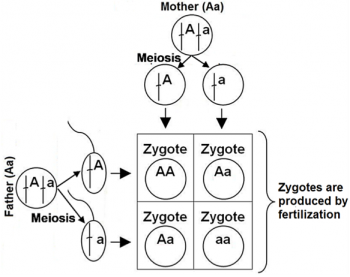Serendip is an independent site partnering with faculty at multiple colleges and universities around the world. Happy exploring!

- home
- education
- science
- Minds-on Activities for Teaching Biology
- Next Generation Science Standards
- Remote Ready Biology Activities
- NGSS Biology Activities
- Hands-On Activities for Teaching Biology
- Teaching Climate Change
- Science Education
- Summer Institutes for K-12 Teachers 1995-2010
- Brain & Behavior
- Biology
- Science & Culture
- Complex Systems
- digital humanities
- play
- one world
 © Serendip® 1994 - All rights reserved. Privacy Policy
© Serendip® 1994 - All rights reserved. Privacy Policy
 In this minds-on activity, students answer analysis and discussion questions to learn how a child inherits one copy of each gene from each parent via the processes of meiosis and fertilization. They analyze how the processes of meiosis and fertilization result in the alternation between diploid and haploid cells in the human lifecycle.
In this minds-on activity, students answer analysis and discussion questions to learn how a child inherits one copy of each gene from each parent via the processes of meiosis and fertilization. They analyze how the processes of meiosis and fertilization result in the alternation between diploid and haploid cells in the human lifecycle.
 In this minds-on analysis and discussion activity, students learn how a mistake in meiosis can result in Down syndrome. Students also analyze karyotypes to learn how other mistakes in meiosis can result in the death of an embryo. Finally, students consider how a health problem can be genetic, but not inherited.
In this minds-on analysis and discussion activity, students learn how a mistake in meiosis can result in Down syndrome. Students also analyze karyotypes to learn how other mistakes in meiosis can result in the death of an embryo. Finally, students consider how a health problem can be genetic, but not inherited.